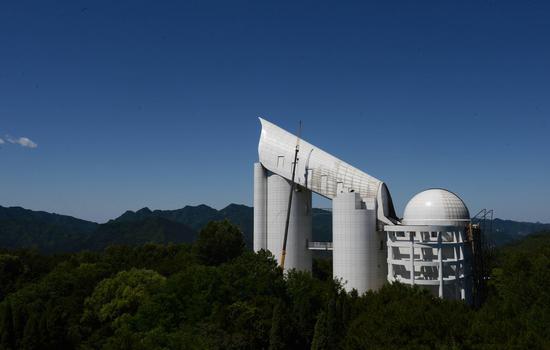Chinese astronomers detect non-accreting neutron star using LAMOST
Chinese astronomers have detected a non-accreting and non-beaming neutron star using the Large Sky Area Multi-Object Fiber Spectroscopic Telescope (LAMOST), a leading optical telescope in China, according to a study published in the journal Nature Astronomy.
The discovery has promoted the detection of dense celestial bodies such as neutron stars and black holes, which are difficult to detect. It will likely boost further study on the formation and evolution of stars and the physical properties and formation theory of neutron stars and black holes.
Neutron stars are dense celestial bodies formed by the evolution of massive stars to the end of their lives. A suitable way to detect non-accreting and non-beaming neutron stars is key for astronomers to study dense celestial bodies.
When using LAMOST to survey the sky, researchers discovered a special binary star system whose spectrum differs from that of a single star.
After analysis and measurement, researchers believe that the dense celestial body of the binary star system is a neutron star with a mass of about 1.2 times that of the sun.
Further radio observations showed no detections of either pulsed or persistent emission from the neutron star, suggesting that it is not currently accreting and pulsing.
The research team will use the method to discover more dense celestial bodies such as neutron stars and black holes.

